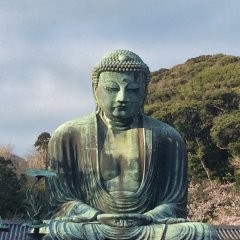Overview
Coordinating trips to Chiba Prefecture's historic and Edo era-infused towns may be a challenge with schedules. The ongoing pandemic puts a damper on festivals, too. But don't be discouraged. The festivals will endure. And the floats, elements of these internationally recognized cultural treasures, will be waiting for you.
The floats, many dating from the Edo era and carefully preserved, display the artistry of carpenters, textile workers, and doll makers. Some dashi floats feature mechanical dolls called karakuri ningyo. Others dashi rotate 360 degrees on their carriages and have lighting, a testament to the ingenuity of the artisans. The figures they bear are heroes and gods, works of expert doll craftsmen, and even clock workers. At crowded and raucous festivals you may catch a glimpse, but to see fine examples, visit these halls any time of year in three Chiba Prefecture cities.
Narita Kanko Kaikan
In early July Narita City holds a three-day celebration to ask for the blessings of Dainichi Nyorai, the healing buddha, and to pray for plenty during rice planting and harvesting. Narita Gion Festival begins with an assembly of dashi parade floats arranged around the courtyard of Shinshoji Temple and a raucous cheering rally before the floats, dancers, and musicians parade around the town. Festivities go day and night, and the narrow streets are filled with food and souvenir vendors.
To see a selection of the parade floats any time, drop by Narita Kanko Kaikan, the tourist pavilion on Omotesando. The pavilion has a wide, sheltered space where you can take a break on your walk along Omotesando to the Shinshoji Temple complex. Tourism counter staff will direct you to the second floor which houses a display of elaborately carved and decorated floats. Continue up to the third floor to see periodic exhibitions. The pavilion is a 12-minute walk from Narita Station on Omotesando. Admission is free.
Hayashi Kaikan
Makata shrine in Sakura City is the center for Sakura Hayashi, an autumn harvest celebration dating to the Edo era. A parade of floats bearing musicians and massive figures weaves along the streets. Ohayashikan in the historic town center documents the history of the festival and keeps the traditional music alive by providing a space for local people to learn and practice the hayashi festival music.

On permanent display are two towering figures, Chikubushima Ryujin and Tamanoi Ryujin. The latter has undergone repair work to restore its movement as it is a katakuri ningyo, or mechanical doll. Hayashi Kaikan is a 20-minute walk from Sakura Station. Admission is free.
Sawara Dashi Kaikan
In July and October Katori City comes alive with festivals and dashi floats. The two festivals are referred to as Sawara no Taisai. The festival in July is the major event of Yasaka Shrine which honored a god who protects the populace from epidemics that proliferated in the summer months.

The autumn festival celebrates the harvest with music and a procession of parade floats topped by towering sculpted figures. At Suigo Sawara Dashi Kaikan, visitors can gaze in awe at two representative floats. These eight-meter-high floats with their intricate carvings and dolls give an impression of the craftsmanship of the Edo era and the wealth of the town. Sawara Dashi Kaikan is a 12-minute walk from Sawara Station.





























